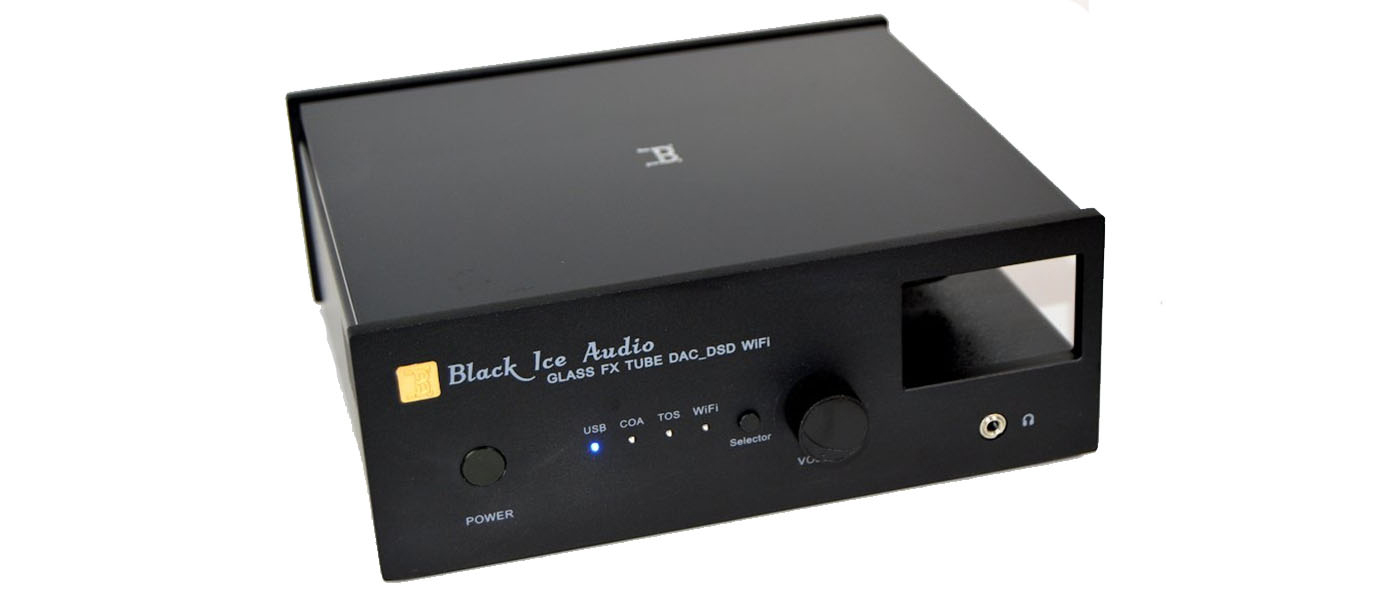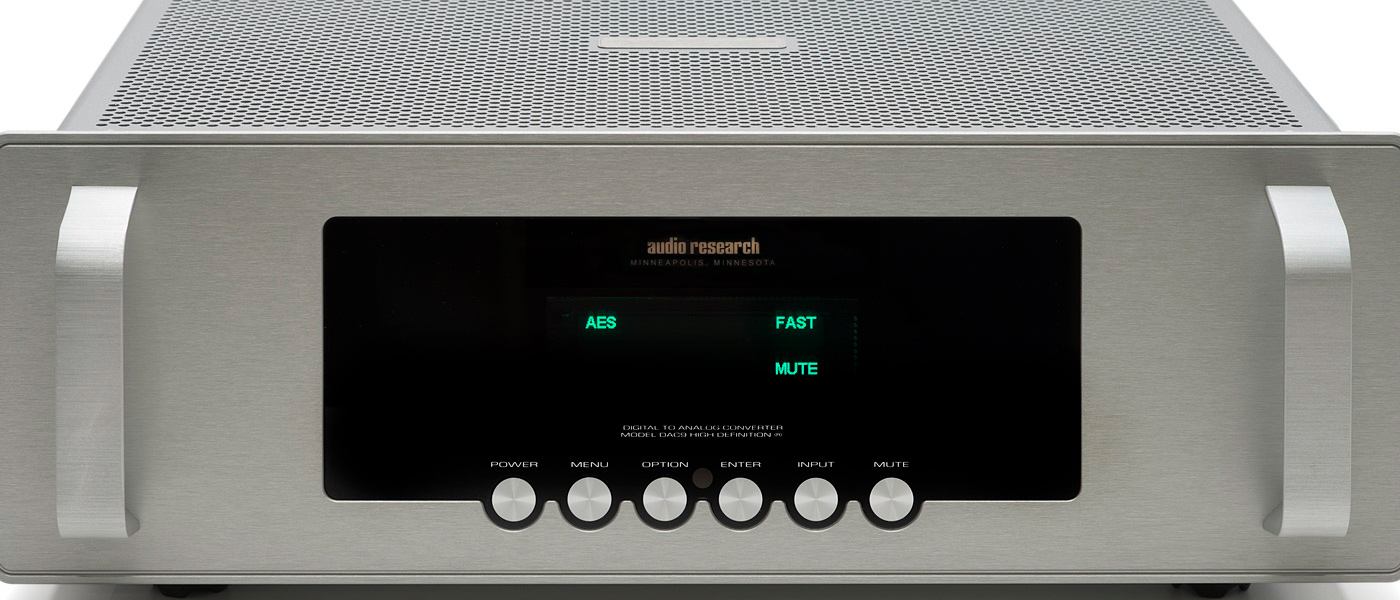
This DAC expertly handled and processed all the high-resolution formats that were used to evaluate it. The DAC 9 uses a pair of Sovtek 6H30 vacuum tubes in the analog stage. The whole package results in one of the most musical DAC’s I have evaluated.
This is the first DAC I have reviewed that has a tube-based analog section. Unlike most 100% solid-state DAC’s, this one doesn’t pummel you with cold, sterile and analytic waveforms. You don’t get that from the Audio Research DAC 9. What you do get is something more akin to actual music. The DAC 9 gives you just what you are going for.
Audio Research DAC 9 Tube DAC
- Detailed, non-fatiguing playback
- Flexible input options
- Functional, transparent-sounding Windows ASIO driver
- Dynamics are true-to-source
- Musical, non-analytic sound quality
Audio Research celebrates its 50th anniversary this year, 2020. That’s right, Audio Research was founded in 1970 and they are still going strong today. They have a very significant, loyal following and they gain new fans year after year. This is how things can work when you keep producing quality products that deliver the goods. That’s the Audio Research image.
Audio Research famously used vacuum tubes in their early products despite the rise of solid-state circuitry at the time. They prove again and again how great tubes can sound. A quick check of their website reveals only one all-solid-state product and that’s a CD player. Everything else they produce includes a tube stage of some sort.
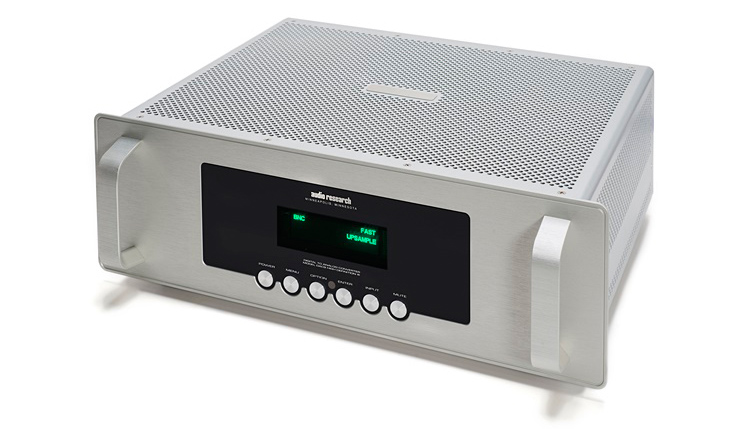
All Audio Research components are designed and manufactured in the USA. They have been located in Minnesota throughout their history.
Surprisingly, this is my first review of an Audio Research product. The DAC 9 Tube DAC is Audio Research’s only stand-alone DAC and features a quad architecture with an analog gain stage that is predicated on a pair of 6H30 vacuum tubes. The DAC 9 has all the most common hook-up options and, each of which can be upsampled with expert handling of the conversion from digital to analog. It was the first in the Audio Research Foundation Series of components. I have a lot more to say about this excellent product in my detailed review below.
Frequency Response:
20Hz – 20kHz (+/-0.15dB)
6Hz – 192kHz (+/-3.0dB)
THD + Noise:
< 0.002% at 2V RMS, 1kHz Balanced output
S/N:
>114dB
IMD + NOISE:
0.001% (SMPTE ratio)
Channel Separation:
107dB
Intrinsic Jitter:
<10pS
DAC Resolution:
24 bits
Output Impedance:
500 Ohms balanced
250 Ohms SE
Digital Filter:
Selectable Fast or Slow algorithms
Upsampling:
All Inputs can upsample to 354.8 or 384kHz
Inputs:
USB2.0HS: 44.1 to 384kHz
DSD: 2xDSD
RCA, BNC, XLR: 44.1 to 192kHz
TOS: 44.1 to 96kHz.
Output Voltage (@ 0dB input):
3.8V RMS max Balanced
1.9V max SE
Power Supplies:
Electronically-regulated low and high voltage supplies (Line regulation better than 0.01%)
Noise:
-103dB
Tube Complement:
(2) 6H30 dual triodes
Dimensions:
7″ (17.8 cm) H x 19″ (48 cm) W x 15.5″ (39.4 cm) D
Handles extend 1.50″ (3.8 cm) forward of the front panel
Weight:
32.0 lbs. (14.6 kg) Net
43.2 lbs. (19.8 kg) Shipping
MSRP:
$8,500 USD
Website:
Company:
SECRETS Tags:
DAC, tube, Audio Research, USB asynchronous, high-resolution, DAC Review 2020
Most manufacturers of DAC boxes spill a lot of ink to promote whatever DAC chip they use in their products. In looking through the Audio Research website and the DAC 9’s manual, I still haven’t a clue from where they source their DAC’s. The only thing they specifically mention is that it is a “Quad DAC” implementation, implying the channels are run parallel off the chip. Honestly, little of this matters if it sounds good, right.
The most salient specification when assessing a DAC comes down to playback bit depth which is expressed as the Signal-to-Noise Ratio (SNR or S/N). Though I did not personally run bench tests on the DAC 9, the manufacturer claims an SNR of greater than 114 dB. This falls short of the approximately 122 dB ratings of the “best” consumer DAC’s on the market. I posit that the difference between 114 and 122 is wholly inaudible to the human ear regardless of the rest of the system parameters or the source material.
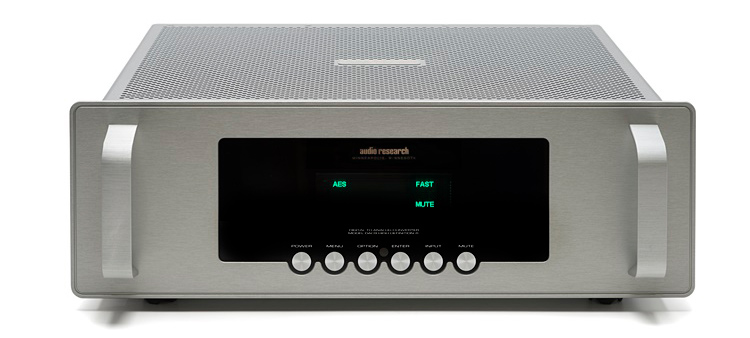
What I do know about this particular component is that it may be the most over-engineered DAC I have had in my system. Judging by the components associated with the tube analog stage, you may think this was a large headphone amp or something along those lines. But it is not. It is a typical line-level DAC box but with circuitry so over-designed that it would never be stressed by a typical musical waveform within its operational envelope. According to the manufacturer, both the analog section and the linear power supply are derived from Audio Research’s balanced line-stage preamps. What this does is promote low distortion and improved linearity not to mention wide frequency response.
The Audio Research DAC 9 is fitted into a full-sized box which appears to be a bit of overkill. Audio Research says that trying to squeeze everything into a smaller box would compromise sound quality. Plus, the design of this component is consistent with their other Foundation series components and there is a lot to say for the consistent aesthetic if you opt to go with an all-Audio Research system (not a bad idea).
I did appreciate that this component wasn’t super heavy like a lot of other high-end products. It was easy to lift and maneuver about.
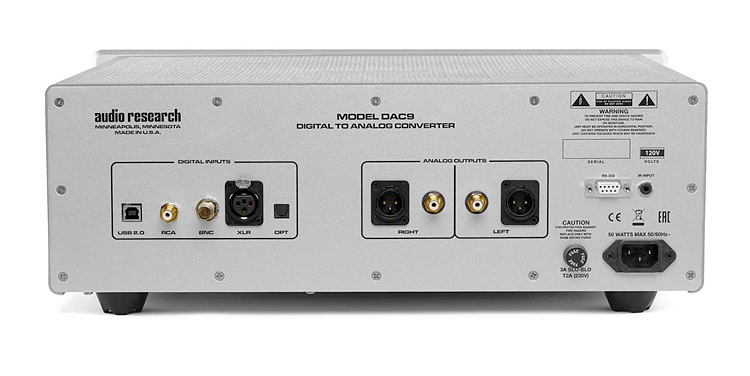
The DAC 9 has all the usual hook up schemes available (back panel only): USB, RCA, BNC, XLR, Optical. What’s missing is a network, wireless, or I2S hook up over HDMI. So consider this when choosing a DAC if your needs branch into those areas. For me, though, the DAC 9 was perfectly excellent as a daily driver. I mostly use USB and optical connections around here.
The DAC 9 also doesn’t do super extra double super-secret resolutions, topping out at 2xDSD or 384 kHz over USB. Native word length/resolution of the DAC 9 is 24-bit. I do not see this as a major shortfall as, again, for all intents and purposes, the improvements in sound quality from higher resolutions is practically inaudible in actual practice.
As I mentioned, the case is large with integrated handles/rack mount flanges. I thought this was cool but the fact is, it wouldn’t fit in my Salamander rack. I had to take a door off the rack to shoehorn the box in there. Audio Research can make a custom-ordered model without handles if you need one that will fit a smaller rack like mine.
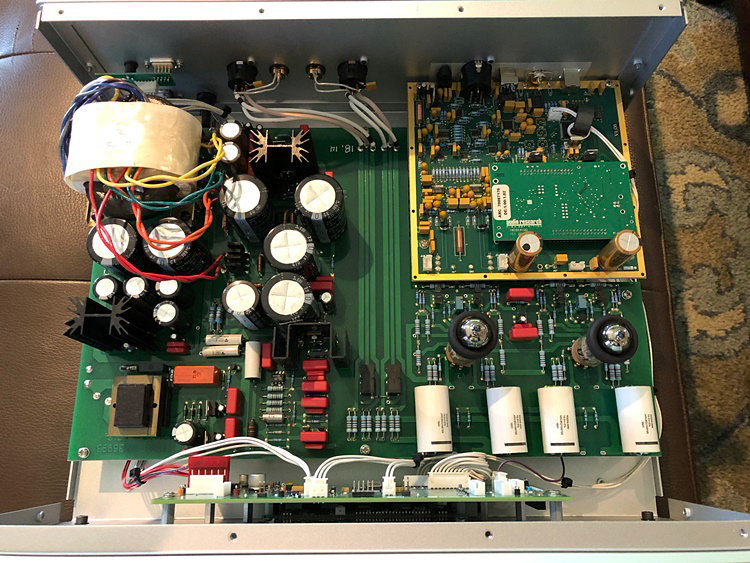
The supplied tubes are a matched pair of 6H30 vacuum tubes sourced from Sovtek (Russia).
On the analog output side, both balanced and single-ended connectors are provided for connectivity to your preamp or integrated.
The unit also comes with a nice little remote that provides very flexible and convenient control capabilities. The handiest functions by way of remote control were the Upsample (on or off) and Filter (fast or slow). I was also happy to see that the remote allowed switching absolute polarity from the listening chair. The DAC 9 has a deeper menu structure with greater control flexibility that you can check out by downloading the online manual from this link –
I inferred from Audio Research’s materials and the Windows drivers that the USB interface and digital section may be from a third-party? I also felt like I read that in their documentation somewhere but fail to find that reference at the moment. Even if this is the case, I view it as a positive. Audio Research’s forte is doing the analog part. Since they desire to put out the best product possible, they may have relied on an outside partner to handle the digital side of the equation. This is, in fact, very common practice and in this case, makes for the best all-around experience for the end-user.
Like I said above, the case of the DAC 9 was pretty large and I needed to remove the door to my Salamander cabinet to fit it inside! So that was a bit of a hassle. But no worries, it was definitely worth the effort.
Before I squeezed it in there, I needed to install the 6H30 tubes. The unit comes with a pair of these tubes and they are pre-tested and mated to work together optimally in your particular unit. In fact, a QA specialist at the factory pre-tests them and they are labeled “V1” and “V2” so you know which socket they belong in. The tubes also have rubber dampeners that are intended to reduce microphonic effects and provide an insulated surface to handle them without leaving fingerprint residue behind.
In further reference to the tubes, Audio Research claims the following, “The vacuum tubes in your DAC9 have been burned in, tested and electrically matched to provide the best performance and reliability of your converter. That said, vacuum tubes must be replaced from time to time. The 6H30 tubes in the DAC9 should have an expected life of approximately 4,000 hours. This life expectancy is only approximate.”
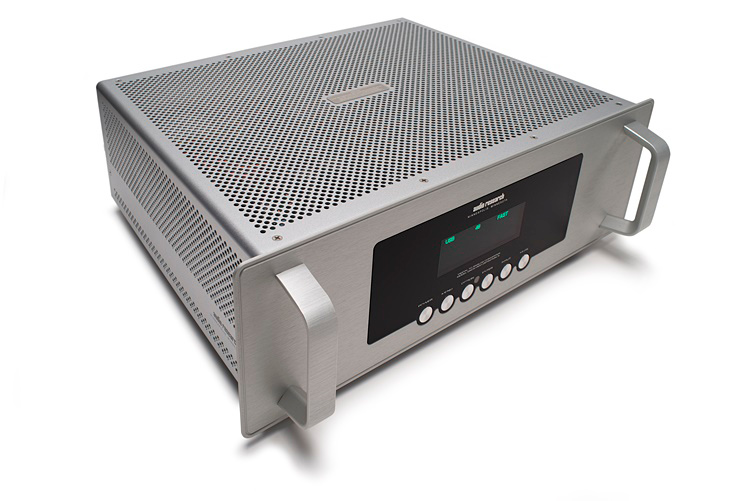
The two main “sources” I used with the DAC 9 were an OPPO BDP-105D via optical and a Windows 10 PC playing high-res Qobuz over USB. We should all know by now that Windows needs to have specific drivers installed for the best performance. Unfortunately, many of these installs can be touch and go and some just flat never worked for me (names withheld to protect the guilty). I am pleased to report that the Audio Research ASIO driver worked without a hitch. It may have been the smoothest and least headache-inducing experience I have had with such drivers. The hardest part was figuring out which driver to download from their website.
ASIO means “Audio Stream Input/Output” and is generally considered the best audio interface for a Windows operating system. It worked without a hitch via the Audio Research DAC 9 implementation.
The DAC does have an RS-232 control interface and IR wired hook up which I did not use. The analog outs are either balanced XLR or unbalanced RCA. I tried both but used the unbalanced for most of my listening. The rest of the system was a passive preamp (potentiometer), a D-Sonic 1,500 WPC stereo amplifier, and a pair of DALI OPTICON 6 loudspeakers.
Audio Research suggests a long break-in period and I used the unit for approximately 80 hours before I started any serious listening.
The DAC 9 has some operational quirks that I’d like to discuss real quickly. Firstly, it starts in mute after a fairly long warm-up sequence. I didn’t time the start-up. Audio Research claims it is a 45-second process. That’s not a problem because you want to wait a little bit for the tubes to warm up anyway. It is just a little different process than I have been used to.
The unit also has auto-shutoff that shuts down the unit after a set period of usage. This can be adjusted from the default of 1 hour to a period of up to 8 hours in one-hour increments. The auto-off can also be defeated in the menu system The auto-off is predicated on user interaction and not on the presence of a signal. So at first, the unit would shut off right in the middle of a song and then I would have to go through the long re-start sequence. I considered this to be “inane”. I wound up setting it to 8 hours pretty soon after and left it that way. (Audio Research informed me that EU standards require the two-hour shutoff so that is why it is included in the DAC 9.)
You can fully control the DAC 9’s basic functions via the front panel, but the supplied remote is really the way to go for controlling the unit plus the remote allows additional control functionality. In any event, the front-panel controls include Power, Menu, Option, Enter, Mono, and Mute. The remote, on the other hand, has direct input selection, adjusts display brightness, toggles upsampling, polarity inversion, select fast or slow filter, selectable DSD or PCM playback, and processing.
I typically used the DAC 9 with upsampling on, fast filter engaged as I felt this provided the best performance. The polarity toggle is an interesting addition. I played around with it but the effect was very subtle to my ear. So I left it in normal for most of my listening.

For my first piece to evaluate, I enjoyed a high-resolution digital stream of Beck “Sea Change” on Qobuz. This was streamed at 24 bit, 88.2 kHz via USB to the Audio Research DAC 9 which was set to upsample as discussed above. This setting upsampled the 88.2 kHz signal to 354.8 kHz.
What I heard was about the best I’ve heard of this album before. The DAC 9 produced a warm, clean presentation that didn’t have any of the sometimes clinical sound I hear with 100% solid-state designs. For example, “End of the Day” was a finely woven tapestry of sonic goodness. The DAC 9 got everything right from the standpoint of dynamics, on both a large and a small scale. Another strong suit I heard was the silence between the notes. Beck’s music is anything but bass-shy and I enjoyed the full, round bass. But again, my most lasting impression is that the DAC 9 sounded like music. This may sound funny to some, however, I have been routinely put off by some otherwise exemplary DAC’s that just squeeze the life from the music and leave behind a robotic-like sound that just doesn’t convey the musicality of what is encoded in the data stream.

Next up was Patricia Barber “Higher” (CD). This new release from Ms. Barber is only available as a direct purchase via Artist Share. I have not been able to find it on any of the streaming platforms. I love this album and find the instrumental passages to be sweetly engaging.
Over the DAC 9, “Higher” sounded so much more musical than many of the DAC’s I have previously evaluated. Again, to my ears, many high-end DAC’s are very accurate and precise but they can also blanch the life from music and sound sterile or analytical. I think the tube stage in the DAC 9 must be responsible in some measure to creating a much more musical vibe and presentation overall. So that is my biggest takeaway from my time with the DAC 9. It was always musical and engaging in a way that begged for long, stress-free listening sessions.

Back to some popular music, I thoroughly enjoyed the High-Resolution stream of Ryan Adams on “When the Stars Go Blue” from his Gold album. This was played back at 24/96 via PC and Qobuz. The Audio Research DAC 9 brought out the fine tapestry of the various instruments in the mix. The DAC 9’s presentation was warm and dynamic at the same time. This dichotomy of themes was, in fact, a hallmark of the DAC 9’s performance throughout the review period: it was precise and accurate but with that subtle tube glow that just draws you into the music.

By this time, I found myself seriously enjoying the bass performance of the DAC 9. So I’ll let you in on a groovy little secret: try out bassist Dean Peer on Qobuz. They have two of his albums on their service. Both are CD quality and are as much fun as a barrel of monkeys. Give him a listen (preferably over a DAC 9 if possible)! This was some fun music that I played over the DAC 9 which put it in its best light.
The AUDIO RESEARCH DAC-9 is easily one of the most musical sounding DACs that I’ve had the pleasure to audition.
- Very musical presentation and sound
- Lacks the “clinical” sound of other high-end DAC’s
- Wide and tall soundstage
- Pinpoint imaging
- Strong bass response
- Handy remote control
- A case that fits on a standard shelf (or removable handles)
- I2S input capability
- Bluetooth?
- Analog volume control
The Audio Research DAC 9 is a serious high-end component. It handles your high-resolution music files and streaming like a boss. It also helped me get the most from my Redbook CDs.
It was a breeze to set up as well. It is particularly praise-worthy that the Windows ASIO driver was easy to locate, download, and install. The biggest boon here was that it worked the first time and I didn’t have to enlist technical support or do any digital backflips to make it work correctly. Most audiophiles who use a Windows computer probably know how rare that is.
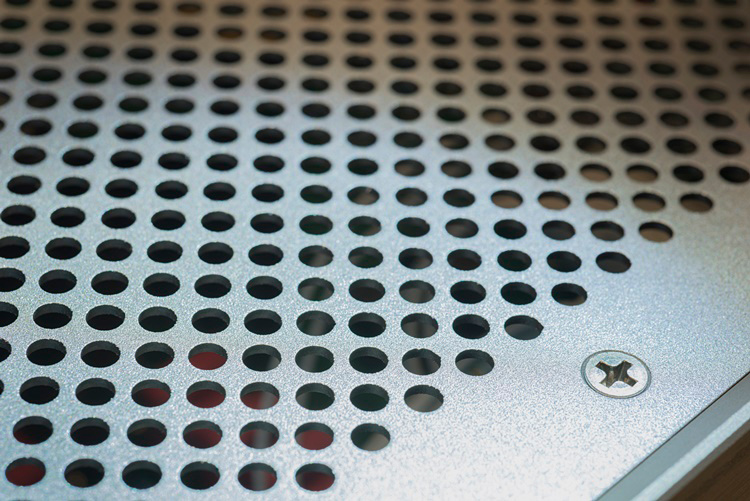
I was also impressed by the DAC 9’s build quality. It was apparently designed to last a lifetime and could become a legacy product. There are a lot of serious Audio Research fans out there and I can see why after my time with the DAC 9. It will hold its value like all other Audio Research components before and after.
The unit was packed up and shipped back some time ago. I still remember the performance of the DAC 9 like it was yesterday. This is one of the few components I have reviewed that I think about often because of how great it was. The tube analog stage doesn’t put a halo on the sound but it did make everything that passed through there sound like authentic music. I am not sure if you can offer higher praise for a DAC!


